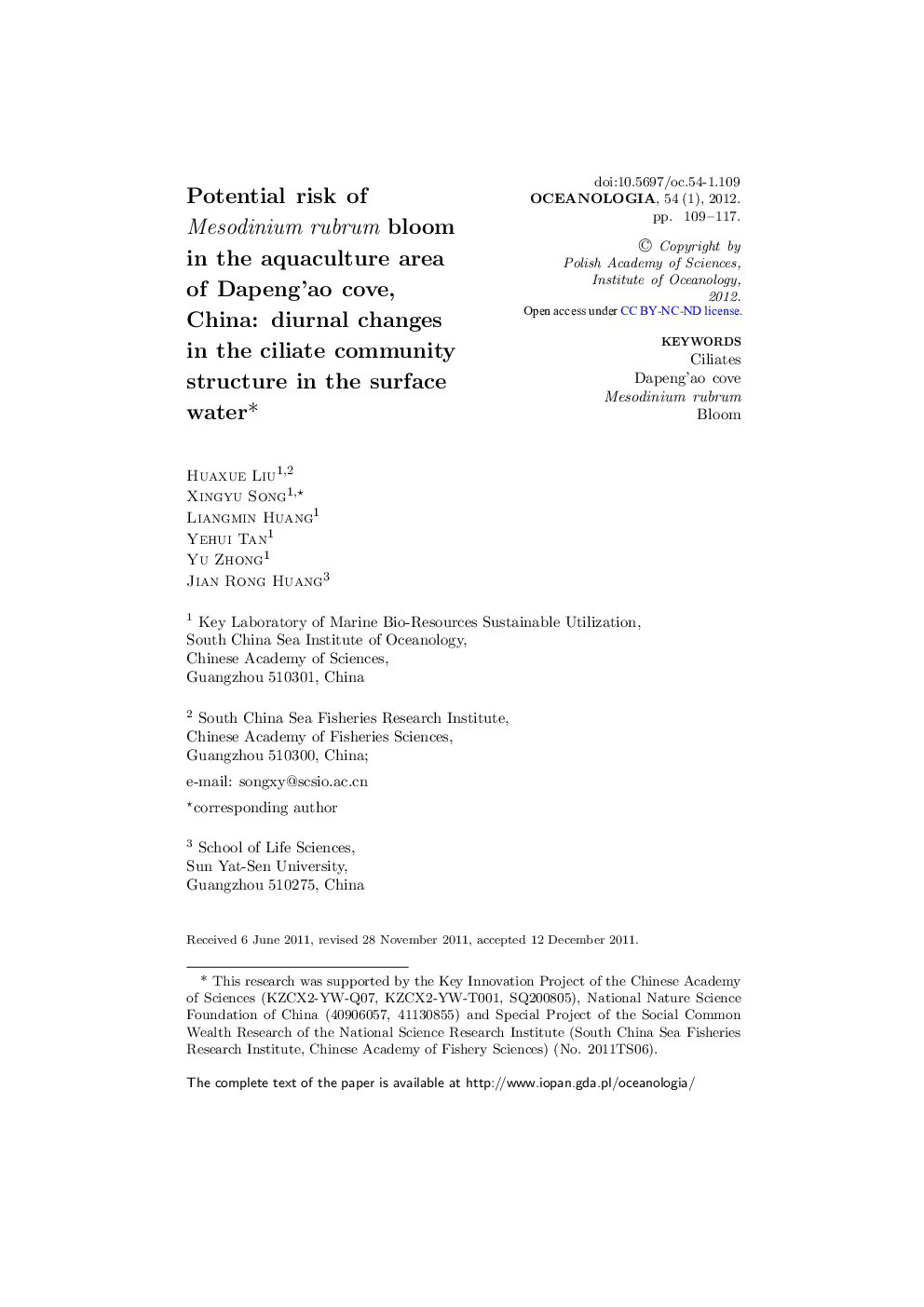| Article ID | Journal | Published Year | Pages | File Type |
|---|---|---|---|---|
| 2069763 | Oceanologia | 2012 | 9 Pages |
Diurnal changes in the structure of the ciliate community in surface waters were studied in the aquaculture area of Dapeng’ao cove, China. Two periods of heavy rainfall occurred during the study period, intensifying water column stratification and influencing the water’s properties. A total of 21 ciliate taxa from 15 genera were identified; the dominant species was Mesodinium rubrum. The maximum abundance of M. rubrum reached 3.92 × 104 indiv. dm− 3, contributing 95.1% (mean value) to the total ciliate abundance. Diurnal changes in M. rubrum abundance were highly variable, the driving force probably being irradiance and food availability. The results suggest that M. rubrum may form blooms in aquaculture areas when there is a suitable physical regime with enriched nutrients, which is potentially harmful to the fish-farming industry.
